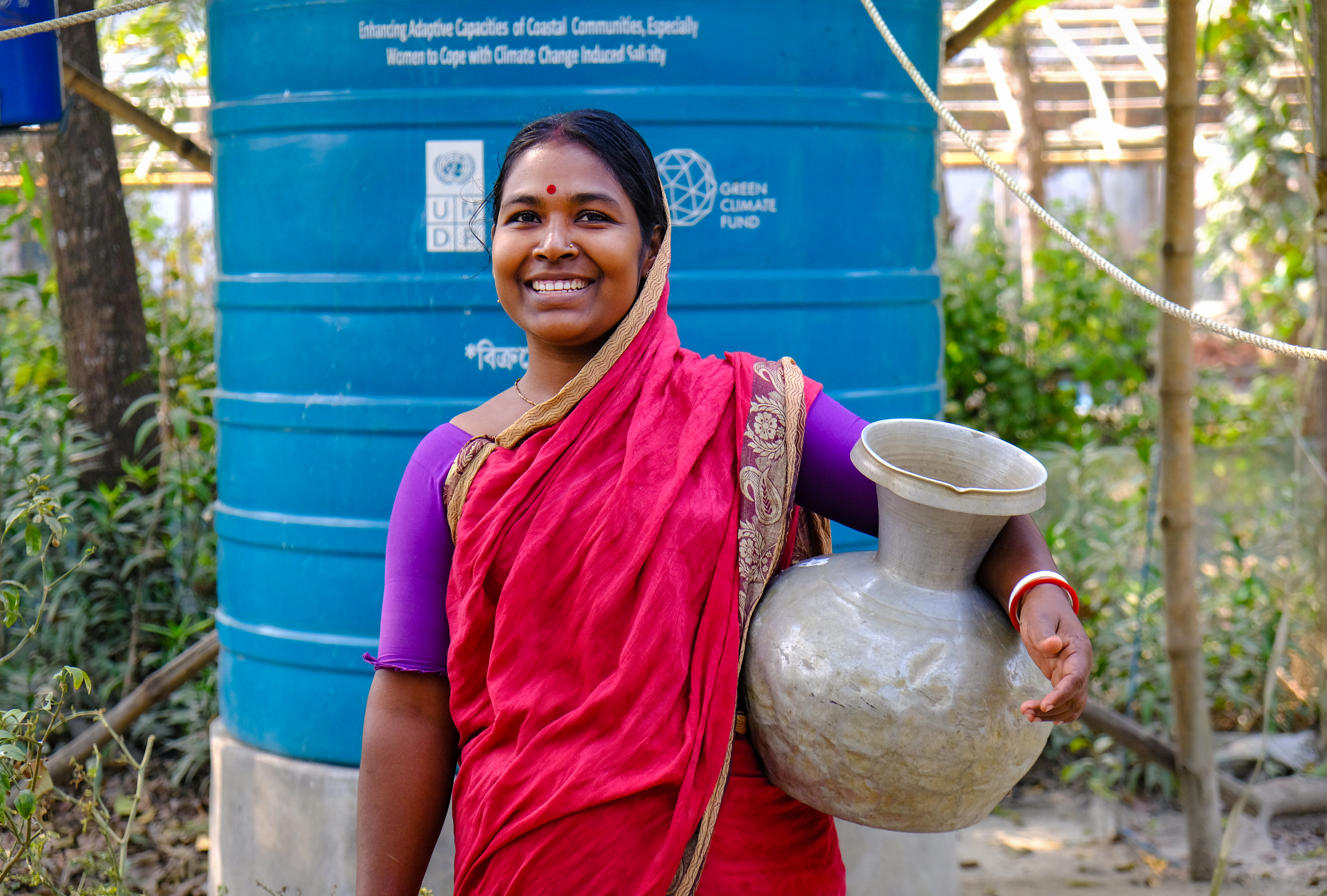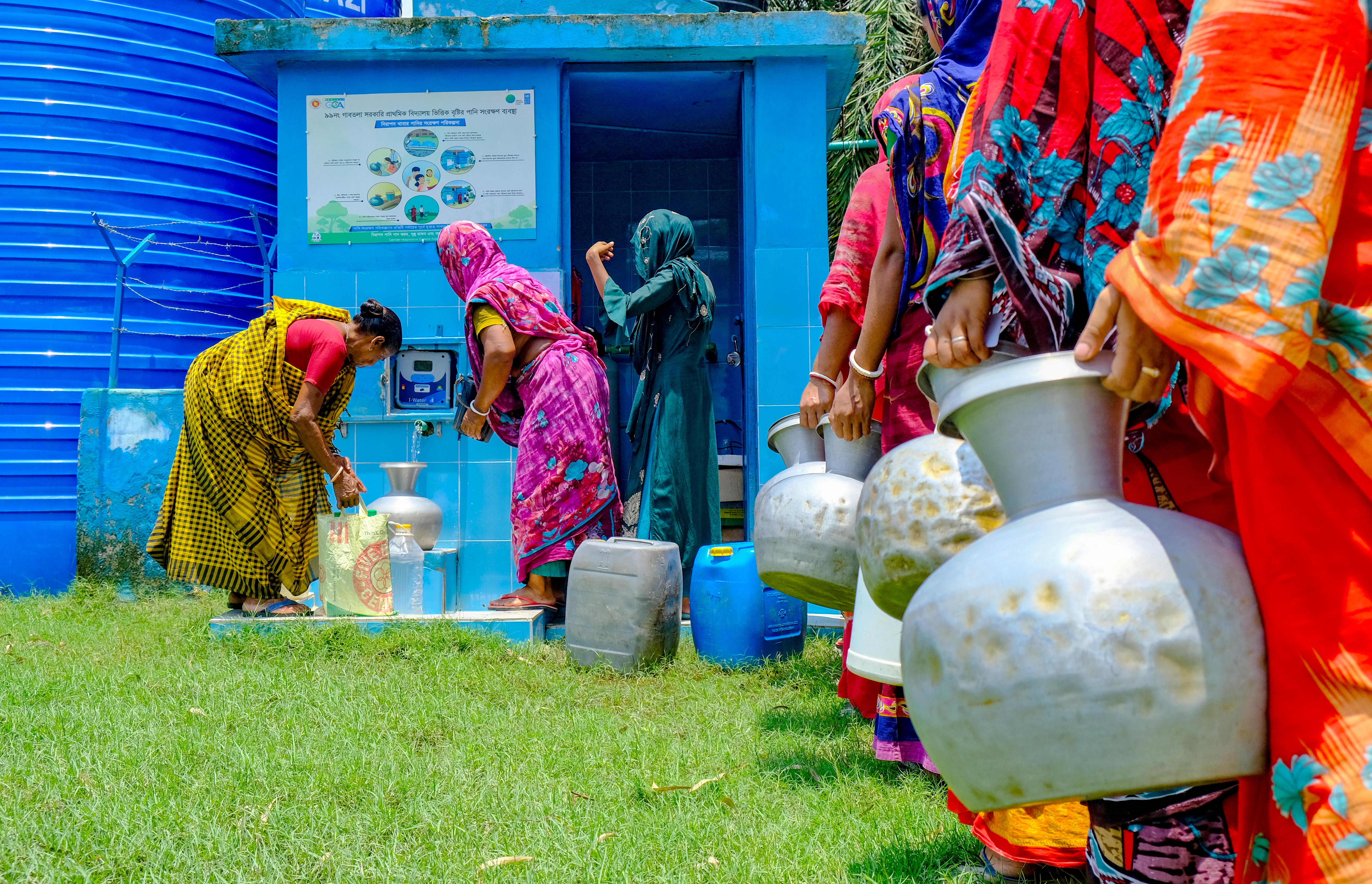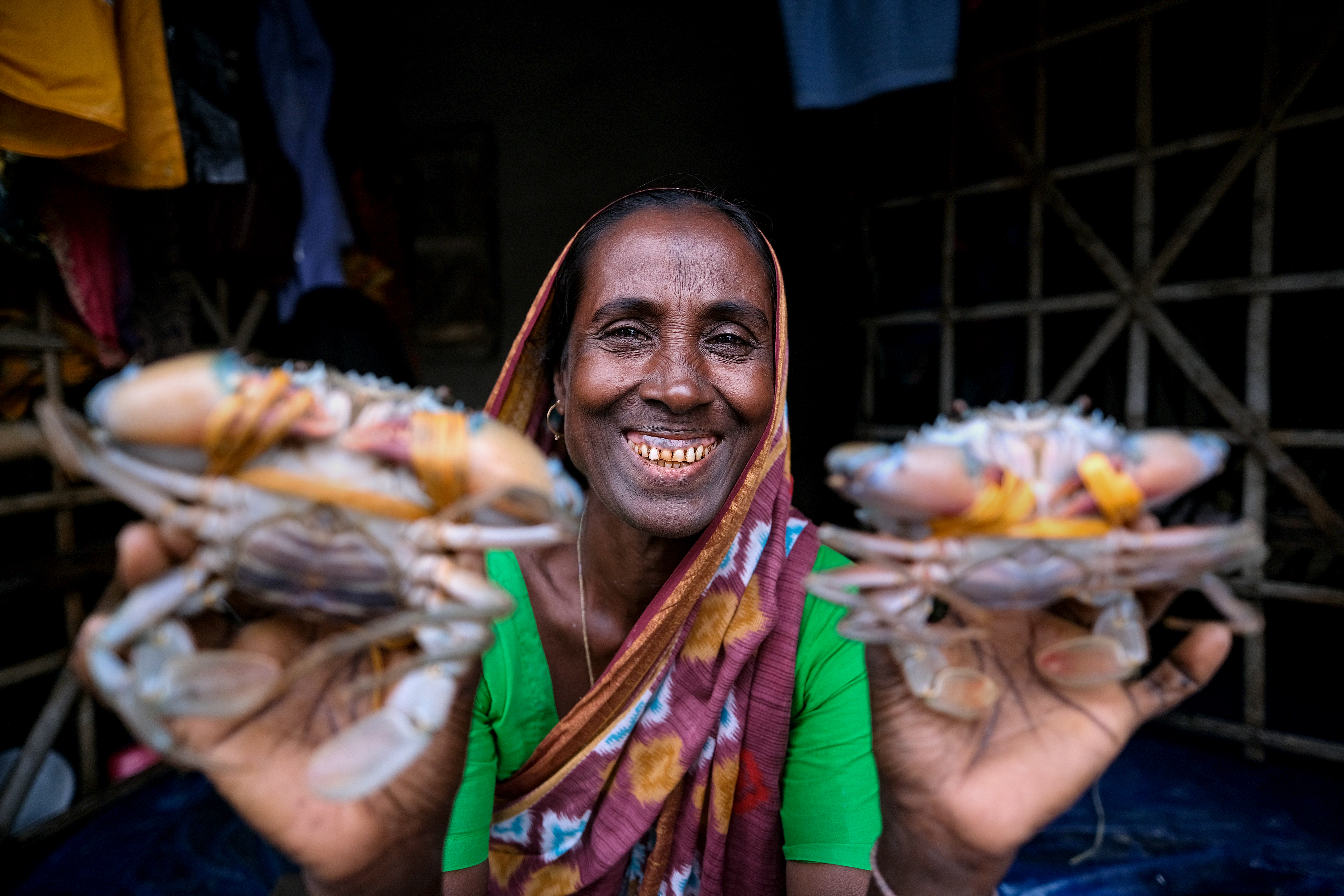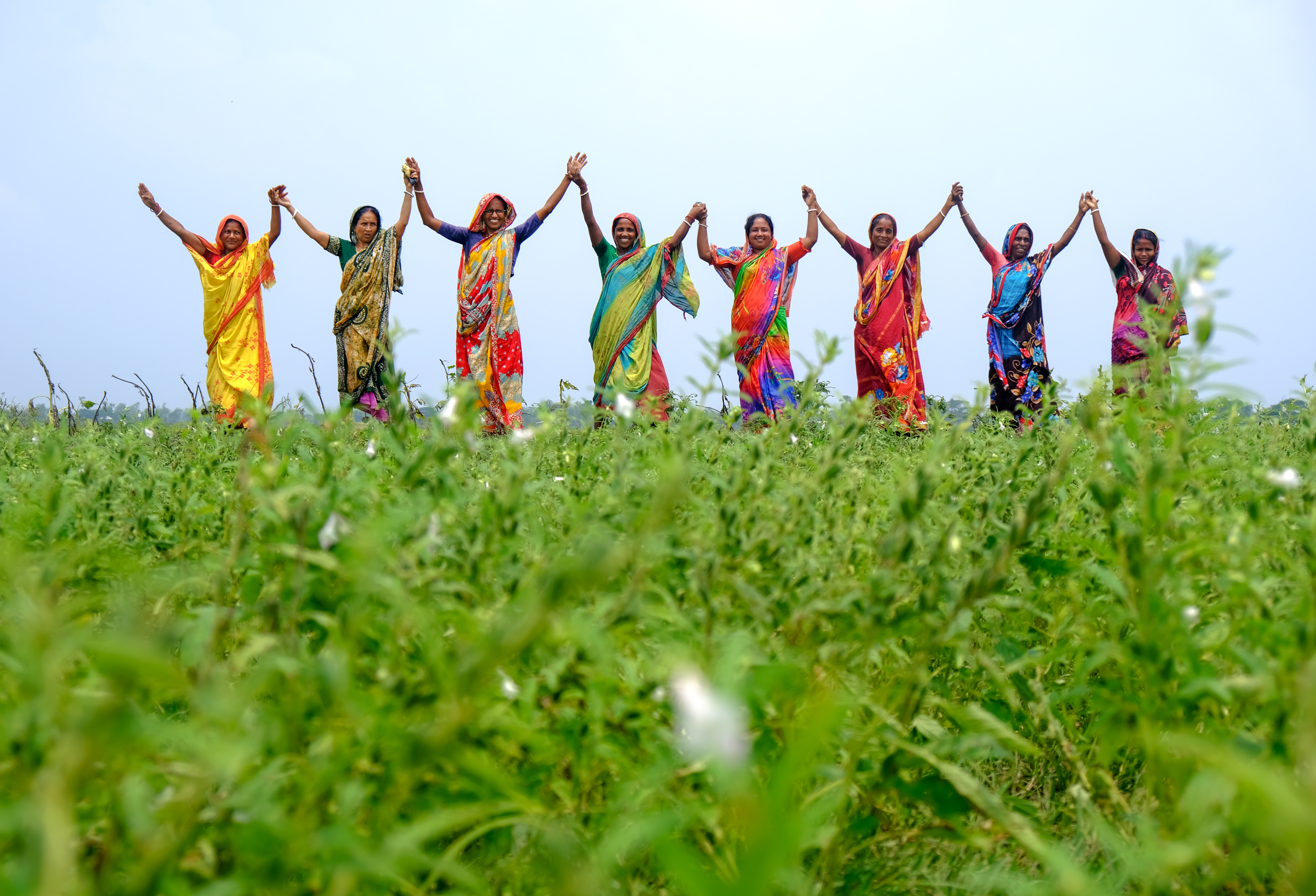Women Lead Coastal Resilience in Bangladesh
Address structural inequalities
Collaborative action and investment
Devolve decision making
Ensure transparency and accountability
Organization: United Nations Development Programme
2025 LOCAL ADAPTATION CHAMPIONS AWARD FINALIST
In the climate-vulnerable coastal districts of Khulna and Satkhira in southwestern Bangladesh, a locally led initiative is placing women at the heart of adaptation. The Gender-responsive Coastal Adaptation project, implemented by the Ministry of Women and Children Affairs and the Department of Public Health Engineering, with technical support from the United Nations Development Programme (UNDP) Bangladesh, is enhancing resilience where it is most needed.
While cyclones, tidal surges, and rising salinity levels have long plagued Bangladesh's coastal communities, climate change is accelerating these impacts, making life even harder for marginalized groups—especially women, the elderly, children, and people with disabilities. Increasing food insecurity, water scarcity, and economic vulnerability are everyday realities.
A Locally Led, Gender-Responsive Approach
Under the Gender-responsive Coastal Adaptation project, community members—particularly women—are actively involved in identifying needs, designing interventions, implementing activities, and monitoring progress. Over 1,020 Women’s Livelihood Groups (WLGs) in over five hundred villages, involving more than 25,000 women-led households, are guiding the course of climate action.
One of the project’s key innovations is its integration of gender-responsive infrastructure with climate adaptation. This includes the construction of cyclone shelters with dedicated women’s spaces, women-friendly Water, Sanitation, and Hygiene (WASH) facilities, and raised tube wells to ensure safe drinking water during floods. More than 13,000 household and community rainwater harvesting systems now provide clean water.


Investing in Local Capabilities
The project prioritizes capacity-building for local institutions and communities. Women-led groups receive training in climate risk awareness, hygiene promotion, and sustainable livelihoods such as crab fattening and saline-tolerant crop cultivation. Local government representatives and frontline service providers are also trained to integrate gender and climate perspectives into planning processes.

To ensure transparency and responsiveness, the project has built in participatory monitoring mechanisms. Community feedback loops allow for continuous learning and adaptation of activities, while project partners regularly review performance to ensure alignment with community needs.
The project also brings together a broad coalition of stakeholders—from NGOs and academic institutions to local government bodies—ensuring shared ownership and co-investment in adaptation outcomes.
“This intervention targets the most vulnerable communities, sections of societies and individuals experiencing climate impacts,” said Md. Abdul Hannan, National Project Manager at UNDP Bangladesh. “By addressing structural inequalities faced by women, youth, children, people with disabilities, people who are displaced, indigenous peoples and marginalized ethnic groups, the project ensures no one is left behind.”
Across multiple subdistricts (upazilas) in Khulna and Satkhira, thousands of people have benefited from improved infrastructure, enhanced access to clean water and sanitation, and strengthened economic resilience. Crucially, women who were once sidelined are now leading efforts to protect their communities from future climate shocks.
The project stands as a replicable model for gender-just, locally led adaptation. It shows how empowering local actors—particularly women—not only delivers better climate outcomes but also drives lasting social change.
